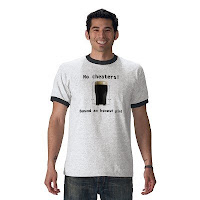On the eve of the first Fresh Hop Tastival (tomorrow, noon-9, Hood River, details
here ), I thought I'd assemble* a list of most of the hops you will encounter, along with brief descriptions. How will they taste in their fresh variant? That is for you to discover.
AhtanumHistory. Its name is derived from the area near Yakima where the first hop farm was established in 1869 by Charles Carpenter.
Flavor/Aroma. A Northwest-style hop with character similar to Cascades or Amarillo. Floral, citrus, piney, sharp. (alpha acid: 5.7-6.3% / beta acid: 5.0-6.5%)
Commercial Examples. Stone Brewing - Arrogant Bastard, Sierra Nevada - Celebration
CascadeHistory. The first commercial hop from the USDA-ARS breeding program, it was bred in 1956 but not released for cultivation until 1972. It was obtained by crossing an English Fuggle with a male plant, which originated from the Russian variety Serebrianka with a Fuggle male plant.
Flavor/Aroma. The most-used Northwest hop, with a lovely mild citrus and floral quality.
Commercial Examples. Deschutes - Mirror Pond, Sierra Nevada - Pale
CentennialHistory. Centennial is an aroma-type cultivar, bred in 1974 and released in 1990. The genetic composition is 3/4 Brewers Gold, 3/32 Fuggle, 1/16 East Kent Golding, 1/32 Bavarian and 1/16 unknown.
Flavor/Aroma. One of the "C" hops, along with Cascade, Chinook, and Columbus. Centennial imparts a pungent, citrus-like flavor and aroma. Sometimes called the Super-Cascade. (alpha acid: 9.5-11.5% / beta acid: 4.0-5.0%)
Chinook History. Chinook hops were developed in the early 1980s in Washington state by the USDA as a variant of the Goldings Hop.
Flavor/Aroma. An herbal, smoky/earthy character. (alpha acid: 12.0-14.0% / beta acid: 3.0-4.0%)
Crystal History. Crystal was released 1993, developed in Corvallis a decade earlier. Crystal is a half-sister of Mt. Hood and Liberty.
Flavor/Aroma. A spicy, sharp, clean flavor. It is not complex like Cascade but offers a clear note when used with other hops. (alpha acid: 4.0-6.0% / beta acid: 5.0-6.7%)
Liberty History. Another cross of the Hallertauer Mittelfrüher, with characteristics similar to those of Mt. Hood, released in the mid-80s around the time of Mt. Hoods' release.
Flavor/Aroma. mild and spicy, closely akin to Mt. Hood and Hallertau. (alpha acid: 3.5-4.5% / beta acid: 3.0-3.5%)
Millenium History. A high-alpha hop released in 2000 and related to Nugget. A patented hop generally used as an extract.
Flavor/Aroma. Herbal, apparently very similar to Nugget. (alpha acid: 12-15%)
Mt HoodHistory. Another Corvallis product, it was developed in 1985 with the quality and aroma characteristics similar to its female parent Hallertauer Mittelfrüher.
Flavor/Aroma. An aromatic variety derived from Hallertau with a refined, spicy aroma and clean bittering. A good choice for lagers. (alpha acid: 4.0-6.0% / beta acid: 5.0-7.5%)
Mt Rainier History. A new hop about which I could locate little information. From a message board comes this description:
Mt. Rainier has a complex parentage, including Hallertau, Galena, Fuggles and other hops.
Flavor/Aroma. Floral/spicy aroma and flavor similar to a Hallertau. Aroma is reminiscent of licorice with a hint of citrus. (alpha acid: 6%)
Perle History. An aroma-type cultivar, bred in 1978 in Germany from Northern Brewer.
Flavor/Aroma. Clean, evergreen, almost minty bitterness and pleasant aroma. (alpha acid: 7.0-9.5% / beta acid: 4.0-5.0%)
Sterling History. A cultivar of Saaz and Cascade principally. Apparently and Oregon hop released in 1998.
Flavor/Aroma. Spicy, purported to be a good replacement for Saaz. (alpha acid: 4.5-5.0% / beta acid: 5.0-6.0%)
Teamaker History. Released this year, with the lowest alphas of any hop and the greatest alpha/beta ratio of any hop. (Article
here).
Flavor/Aroma. No information. (alpha acid: 0.6 to 1.8% / beta acid: 5.4 to 13.2%)
Tettnang History. The original hop from the Tettnang region of Germany, and one of the ancient "noble" hops.
Flavor/Aroma. Spicy and floral. (alpha acid: 4.0-5.0% / beta acid: 3.5-4.5%)
Willamette History. A seedling of the British Fuggle, developed in 1976 in (unsurprisingly) Oregon and a standard in American brewing.
Flavor/Aroma. Woody, earthy, peppery. (alpha acid: 4.0-6.0% / beta acid: 3.5-4.5%)
Warrior History. A proprietary, high-alpha hop from Yakima Chief.
Flavor/Aroma. Neutral, clean bittering. (alpha acid: 15-17%)
__________
*This is an assembly job. I didn't write these descriptions, but stole them from the following websites: Beer Advocate, Brew 365, Hopsteiner, Yakima Chief
 Something warming on this dark, drizzly day? Something dark? Or perhaps you have plans to dress up as a ghoul yourself and go to an adult party, it being one of those rare Friday Halloweens. As for myself, I will be at a dinner party about which I know very little--except that it's not Halloween-themed. So in my stead, you must make merry and drink good beer.
Something warming on this dark, drizzly day? Something dark? Or perhaps you have plans to dress up as a ghoul yourself and go to an adult party, it being one of those rare Friday Halloweens. As for myself, I will be at a dinner party about which I know very little--except that it's not Halloween-themed. So in my stead, you must make merry and drink good beer. Alternates include other devilish beers like Lucifer or Russian River's Damnation--all in the Belgian golden vein.
Alternates include other devilish beers like Lucifer or Russian River's Damnation--all in the Belgian golden vein.












